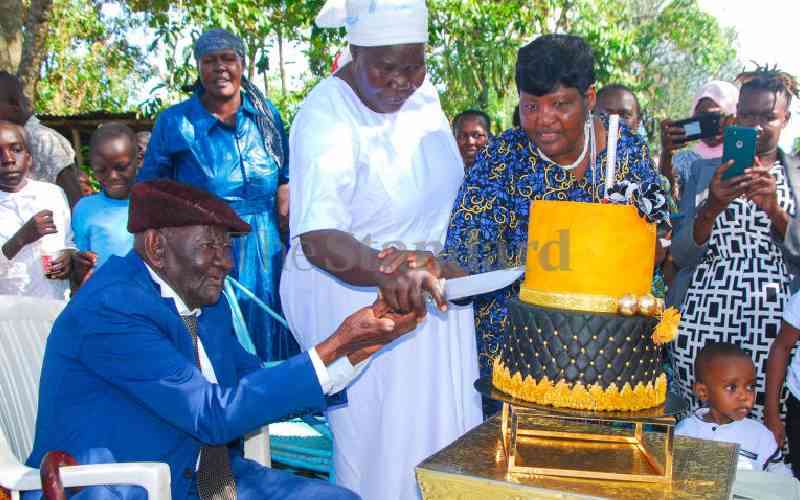By ALLY JAMAH
Narok, Kenya: Kenya has gold deposits that could easily be turned into high-value bars for export, and attention in the mining industry will on Tuesday turn to Lolgorian in Trans Mara, Narok County when an international gold company begins a fresh round of producing pure gold, much of which is believed to be unexploited.
Experts reveal that initial exploration in Narok County discovered at least a million ounces of gold worth at least Sh1.2 billion going by current market prices. This is yet another sign another sign that the country has alternative revenue streams, after years of relying on agriculture and tourism to drive its economy.
Kilimapesa Gold, which is owned by London-based gold firm Goldplast, is expected to begin smelting the mineral into high-grade bars from mid-morning tomorrow.
Goldplast Chief Executive Officer Mr Ian Visagie, who is based in London, is expected to attend the event.
“Producing gold bars is a big deal for our company and Kenya because that means we can now be seen as gold producers who can be taken seriously, even if our production levels are not as high as those of countries like South Africa,” said Kilimapesa’s Non-Executive Director Lojomon Biwott on Sunday.
Biwott also revealed that the initial exploration activity by the company in Narok County is worth at least Sh1.2 billion.
The value would be much higher, but gold prices are at an all-time low of Sh1,200 an ounce from a high of Sh1,800 only a year ago.
“We believe that substantial amounts of gold will be found in Kenya once thorough exploration is done using the latest technology. The types of rock we are seeing in Narok and Western Kenya offer a very good promise,” he added.
This development is reigniting interest in gold exploration that had waned since the gold rush in Western Kenya and around Lake Victoria in the 1930s. Since then the gold industry has been in the hands of small-scale miners whose production levels are relatively low.
MARKET CONDITIONS
Kilimapesa has a target of producing about 10 kilogrammes of pure gold a month for export, but the figure will fluctuate based on various market conditions.
Traditionally, Kenya has not been seen as a gold producer, but this development is bound to change perceptions and attract huge amounts of investment into the mining industry. Until recent years, mining exports only amounted to around one per cent of the gross domestic product.
The mineral deposits were predominately titanium and non-metallic substances such as soda ash, kaolin, fluorspar and gemstones. But with this gold find, things are set to change notably. A gold bar is refined gold of any shape that is made after meeting strict international conditions of manufacture, labeling, and record keeping.
Larger gold bars that are produced by pouring molten metal into molds are called ingots. Standard gold bars are held as reserves by central banks.
Stay informed. Subscribe to our newsletter
Kilimapesa began mining in January 2012, producing Kenya’s first ever bar of gold.
Financial Manager Jeff Longstaff explained that Kenyans and the company stand to benefit from the income that is expected from gold once production and export of the commodity is scaled up.
Currently, the top producers of gold on the continent are South Africa and Ghana. Other countries such as Kenya used to be thought to have only minimal deposits.
But Biwott believes Kenya can produce significant quantities of gold and other lucrative minerals if only the Government played its part in developing a proper geological survey map of the whole country.
The survey is an in-depth analysis of rock compositions in various parts of the country. Providing information is valuable to mineral prospectors as it will indicate where different minerals are likely to be found.
“Currently, mineral companies are spending lots of money to conduct their own geological surveys. If the State had a such a map, more investors would come into the mining industry and more minerals would be discovered with ease,” he said.
“Kenya’s mineral industry has begun to pick up in recent years. But this industry would grow much faster and make Kenyans wealthier if the geological map was in place,” he added.
Last month, the gold producer announced it was considering bringing in other investors to scale up operations of the mine and produce more of the precious mineral.
Production is expected to go up once world gold prices improve. Kenya’s mining companies are also pushing for the enactment of the Mining Bill and for policy to be fastracked and concluded in order to stimulate mineral prospecting, production and export.
“We need a supportive regulatory environment since mining is a very expensive and time-consuming venture that requires maximum support. If not, investors will always look for greener pastures,” explained Biwott.
 The Standard Group Plc is a
multi-media organization with investments in media platforms spanning newspaper
print operations, television, radio broadcasting, digital and online services. The
Standard Group is recognized as a leading multi-media house in Kenya with a key
influence in matters of national and international interest.
The Standard Group Plc is a
multi-media organization with investments in media platforms spanning newspaper
print operations, television, radio broadcasting, digital and online services. The
Standard Group is recognized as a leading multi-media house in Kenya with a key
influence in matters of national and international interest.
 The Standard Group Plc is a
multi-media organization with investments in media platforms spanning newspaper
print operations, television, radio broadcasting, digital and online services. The
Standard Group is recognized as a leading multi-media house in Kenya with a key
influence in matters of national and international interest.
The Standard Group Plc is a
multi-media organization with investments in media platforms spanning newspaper
print operations, television, radio broadcasting, digital and online services. The
Standard Group is recognized as a leading multi-media house in Kenya with a key
influence in matters of national and international interest.







